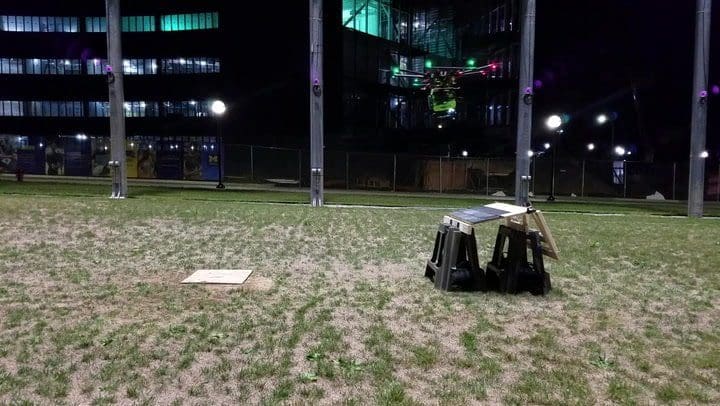Drones can be annoying, and sooner or later we'll see a remake of Hitchcock's 'The Birds' based on them, but sometimes they can also be useful.
An octocopter drone "armed" with a nail gun can pass over a roof and repair it in complete autonomy: this is what it claims Ella Atkins from the University of Michigan, which built the system for its initial roof repair needs.
She and her colleagues modified the drone by equipping it with the nail gun and a sensor system to track positioning and surface, allowing the aircraft to fly exactly where needed. The video shows a test in which the drone nails a series of flexible tiles with extreme precision.
I don't know about you, but the idea scares me a little. Of course, this specific drone is programmed so as not to fire nails randomly into the air: the weapon's trigger only works when the gun rests on the surface to be worked on. The problem is that such knowledge could be used later. The day a series of drones spread panic by driving nails into passers-by, don't say I didn't warn you.
The usual work problems
For Atkins, the drones thus modified will not massacre human resources in the repair market: even in the case of massive use, there will always be the need for human support to prepare equipment and materials.
Commercial use
When it is introduced into the market circuit, this gun drone will necessarily be connected to a wired power supply, and the weight, structure, volume and quality of the nail gun will also need to be improved. The base, however, is already excellent.

"What we have done is truly spectacular," says the researcher. Beyond the repairs, before now it was impossible to make a person carry out actions of such proximity drone. She says she is convinced that the next generation of aircraft will be perfectly capable of coming into physical contact with objects of all kinds.
No more deposits and deliveries, therefore, but actions done by flying.
But remember what I wrote in the box: after all, this drone is armed, and sooner or later the weapons always end up in the wrong hands.
Research references: arxiv.org/1909.08162

